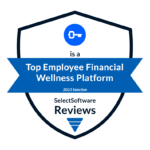Many benefits leaders are sharing the same reality right now: employee benefit budgets are tightening, economic uncertainty is high, and there’s organizational pressure to demonstrate clear, measurable ROI from every dollar spent.
That’s why it’s critical to address one of the biggest drivers of poor outcomes across the board: financial illness. It causes employees to miss work, make errors, leave jobs, and/or struggle with mental health. For employers, that translates into higher healthcare costs, lower productivity, and increased turnover.
Yet, many companies are still dedicating their employee benefit budgets into traditional financial wellness solutions, like financial education, self-serve digital financial tools, financial planning, retirement solutions, or point solutions such as student loan benefits, earned wage access, or workplace emergency savings accounts to support employees’ financial needs.
The problem? None of those benefits help an employee deal with a crisis, avoid eviction, find money to repair their car to get to work, figure out how to prioritize bills and or deal with late ones, or manage debt. With 70% of Americans living paycheck to paycheck and more than two-thirds of Americans considered financially unhealthy, those needs are no longer the exception.
To make the most of your employee benefit budget, rethink your employee financial wellness strategy to prioritize comprehensive financial support that’s relevant to every employee. This requires one benefit with a breadth of support and solutions that can meet every employee wherever they are in their financial health journey, and make it easy for them keep taking steps forward in their financial lives.
Here are four ways to make sure every dollar you spend on financial benefits works as hard as it can, helps every employee, and delivers real results.
1. Alleviate their current source(s) of financial stress
What drives value in your benefits strategy? Real solutions for the problems causing employees’ financial stress right now. Addressing the pressing needs keeping them up at night is often the first entry point into engaging employees with a financial health benefit.
For example, when Amazon surveyed its frontline employees about their financial priorities, housing and transportation support topped the list. That insight revealed the need for a financial benefit that could triage what’s happening now before employees can focus on what’s next, changing how the employer thought about and approached its financial wellbeing strategy.
Since making that shift and offering support for everyday money problems, Amazon has seen about half of its frontline employees saving for emergencies, and 90% self-reporting less financial stress once they engage with their Brightside Financial Care benefit.
2. Shift from education to personalized support
A review of more than 200 studies found that financial education leads to behavior change just 0.1% of the time. Even then, the effect fades within 20 months.
Employees under financial stress don’t need information; they need compassionate support from someone who can help them take action. That’s why Brightside Financial Care pairs each user with a dedicated Brightside Financial Assistant, a real person who works to understand each employee’s unique situation and barriers, finds meaningful solutions that address their financial needs, and encourages them to feel hopeful things can get better.
Brightside Financial Assistants deliver bite-sized financial education in the right moments that resonate with employees, but never lecture, tell employees what they “should” do, or make them feel ashamed. Don’t underestimate the value of providing employees with a confidential resource they can be honest with about their financial needs and challenges.
3. Keep your offering easy to understand and use
The more financial benefits you offer, the more difficult it becomes for employees to understand what is available to them, and what the benefit does or doesn’t support. That’s why Brightside Financial Care supports every type of employee financial need, and connects employees to the right solution at the right time, whether that’s an affordable paycheck-linked partner loan, local housing assistance, or debt management support – and also integrates with your existing benefits.
In addition to connecting with solutions on Brightside’s platform, our Financial Assistants act as a concierge of sorts to help employees identify and navigate your benefits ecosystem, including your hardship fund, so it’s easy for them to get value from all their relevant benefits, without adding more complexity for HR.
4. Measure what matters to your people and your business
The best wellbeing programs don’t just offer support, they positively change employees’ lives and demonstrate those improvements with measurable outcomes.
At Brightside, we track and report metrics including:
- After-tax income (the amount of money we help put back in employees’ pockets when they engage with us)
- Reduction in the number of employees with subprime credit scores
- Reduction in the number taking 401(k) hardship withdrawals
- Increase in employees who are saving for emergencies
- Reductions in turnover
- Increased productivity, based on more hours worked per year.
By measuring the financial and business impact of a financial health benefit, you can show real ROI to your leadership and feel confident that you’re providing comprehensive support that’s relevant to your employees.
When budgets are tight, every benefit must work harder
Most of your employees are feeling financially stressed, and many are financially struggling, regardless of role or income. Traditional financial wellness tools won’t fix that. But personalized, comprehensive support from Brightside Financial Care will.
Want to learn how Brightside can help you stretch your benefits budget and make every dollar count for every employee? Let’s talk.





